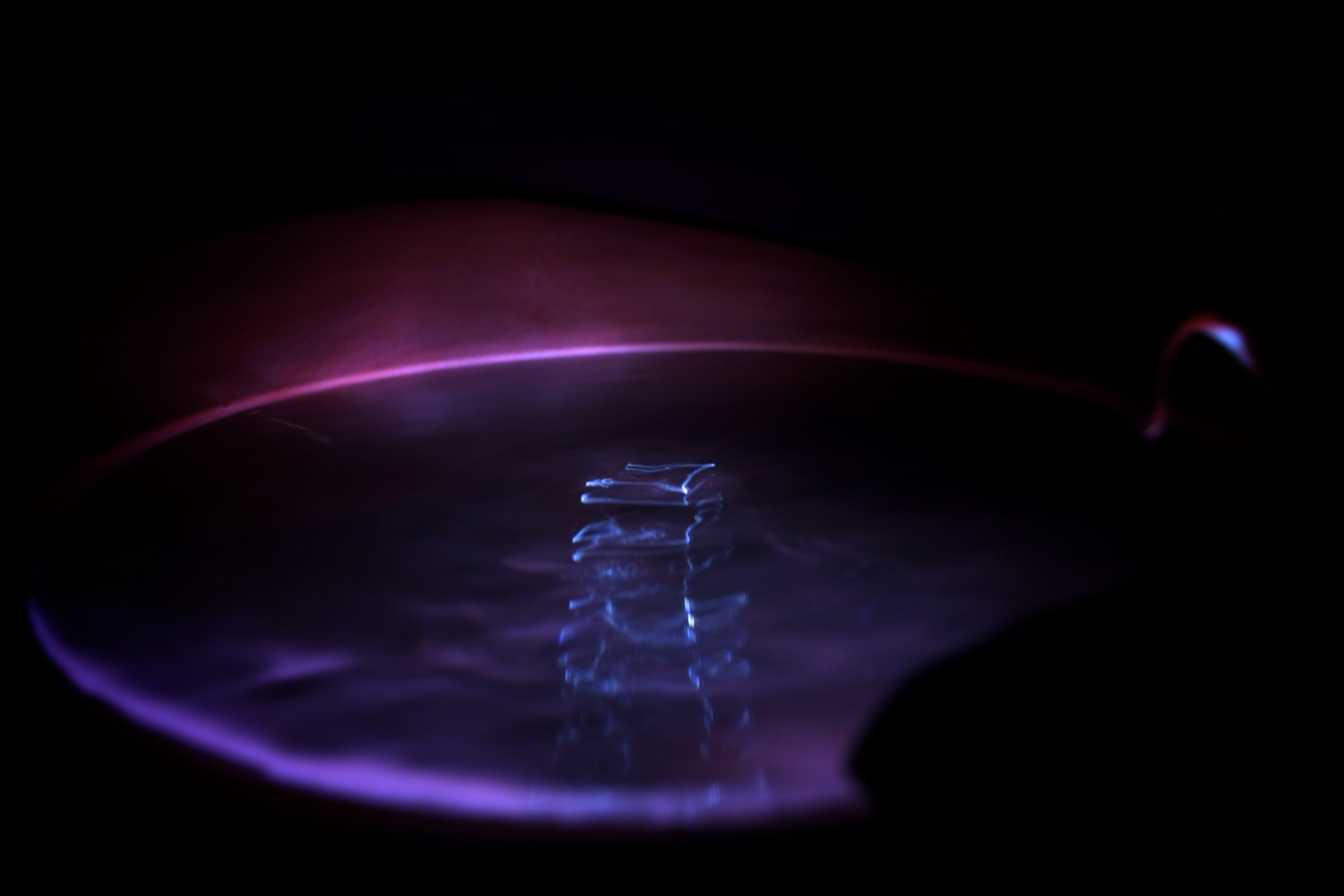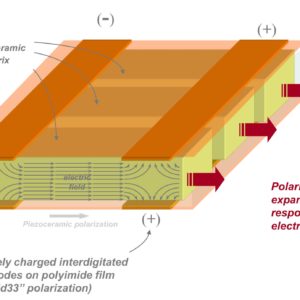Excitable Matter And Structure-borne Behaviour And Sense
Topological Media Lab
Montreal, CAN 2022
This platform for experimentation examines the agentic and experiential potential of new excitable materials and their potential to acquire structurally emergent capacity for behaviour, sense and palpable ways of interacting with their milieu. Excitability here is understood as degree of liveliness of matter, in its “capacity to affect and be affected by other bodies” (Myers). This platform borrows this qualitative notion from philosophical biology and social sciences to examine the behavioural and experiential potential of matters of process. This will lead to the synthesis of new forms of these materials and the orchestration of their formative dynamics.
Design Ethos
Our goal is to mobilize the interdisciplinary partners towards bypassing the design-thinking separations between structure, sensing technologies, software, kinetic events, sonic manifestations, and the methodologies leading to design of excitable materials. As such, we wish to mobilize the generative interplay between structure, form, and matter as they manifest behaviour and sense through loops of formative processes (Simondon). We will do this via an established a design process that is fine-tuned, “to carefully consider the coupling of tactile and gestural action across layers of physical and computational material in coordinated dynamical variation” (Navab et al. 2014). Our goal is to contribute new methods for the design of haptic-acoustic events that attentively work via the conceptual and corporeal power of lively material dynamics.
Design Research: Excitable Materials
We have reviewed, tested, evaluated, and catalogued an array of smart materials for their ‘excitability’ potential. Four types of cutting-edge smart hybrid sensor/actuator materials along with new techniques for coarticulation of computational matters of process proved most promising which are being explored in depth:
- PVDF skins and coaxial whiskers (structure-vibrationally excitable skins and tentacles) – 2020-…
Research team: Navid Navab, Garnet Willis, prof. Philip Beesley, prof. Michael Montanaro, Dr. Alice Jarry
This stream simultaneously experiments with both sensing and actuating potential of thin-flexible PVDF sheets, and tensile strength and flexibility of coaxial piezoelectric cables. These two types of piezoelectrically excitable materials are explored for their structural and sculptural affordances, their flexibility, their tensile strength, and their morphological adaptability. Cutting-edge machine-learning algorithms are applied to digitised vibration that these materials transmit to sense and follow structure-vibrational and haptic interactions. When used in reverse, as actuators, these materials can locally emit audible vibrations from their flexible skin-like membrane, making them suitable for use as highly localizable and customizable hybrid sensor+speaker. - Pneumatic veins and mouths (sonorous tubes and chambers) – 2021-…
Research team: Navid Navab, Garnet Willis, prof. Philip Beesley, prof. Michael Montanaro, Dr. Alice Jarry
This stream explores new techniques for pneumatic articulation and sculptural localization of sonorous chambers, pipes, and resonant mouths.
- MRE membranes (structure-vibrationally adaptive membranes) – 2021-…
Research team: Dr. Alice Jarry, Dr. Ramin Sedaghati, Navid Navab, Dr. Subhash Rakheja, prof. Philip Beesley, prof. Michael Montanaro, Brice Ammar-Khodja, Alireza Moezi, Dr. Hossein Vatandoost
This stream creatively and sustainably explores the hybrid use of Magneto-Rheological Elastomers (MREs) via which mechanical viscoelastic properties of structures such as stiffness, and damping can be adaptively changed through variation of an external magnetic field. Moreover MREs can exhibit magnetostriction effects (actuation) under applied magnetic fields. These unique features can be effectively utilised in current areas of applied research ranging from dynamic vibration control and smart actuators to new sensor materials. We will explore novel forms of engagement with MRE materials within hybrid excitable assemblages, notably including sustainable polymers.

Bio-MRE membranes, Photo: Brice Ammar-Khodja - MFC structures (multimodal thin-sheet sensor-actuator with emergent properties: haptically shape-shifting and sonically responsive folds, thermodynamically varied breathable skins, etc.) – 2022-…
Research team: Navid Navab, Dr. Alice Jarry, Dr. Ramin Sedaghati, Dr. Subhash Rakheja, prof. Philip Beesley, prof. Michael Montanaro, Brice Ammar-Khodja, Alireza Moezi, Dr. Hossein Vatandoost
Macro Fiber Composite™ (MFC) is a leading low-profile actuator/sensor offering high performance, flexibility and reliability. It can be bonded or embedded as a thin sheet to various types of structures. Invented by NASA in 1999, and recently licensed, customised, and instituted to meet the requirements for new applications, the MFC offers an array of unprecedented potential behaviours and properties within a small, flexible and reliable form with emergent affordances which are ideal for integration into hybrid excitable membranes, to be adapted for use within design, art, performance, and architecture. (Wilkie)
Notable technical affordances of MFCs for use within living architecture systems:
– With a flat, flexible, damage tolerant and environmentally sealed profile that conforms to surfaces, the MFC can be bonded or embedded as a thin sheet to various types of structures– With a flat, flexible, damage tolerant and environmentally sealed profile that conforms to surfaces, the MFC can be bonded or embedded as a thin sheet to various types of structures
– Capability of simultaneously acting as an actuator and sensor allows for its use in critically tight areas: If no voltage is applied it can work as a very sensitive strain gauge, sensing deformations, noise, and vibrations. Interacting with voltage, MFC can work as an actuator to bend, distort materials or generate vibrations. The MFC is available as elongator and contractor with increased strain actuator efficiency and directional actuation / sensing.We are designing unprecedented ways of fabricating and interfacing MFC-based structures, for instance by using complex waveforms to drive kinetic, haptic, or sonic events. When combined in an in loop with sensing properties of MCFs, these complex actuation behaviours can be designed to acquire an adaptive and excitable quality.


audio-driven MFC, Photo: Dr. Thomas Daue
Contributions
Research in emerging forms of the four smart materials above is in a young and rapidly expanding stage and has hardly ever been investigated for its excitability by artists and designers. The research will challenge the fundamental role of structure-borne sensing and structure-borne behaviour in the design of living architecture systems, thus fostering novel set of interactions without needing to “program in” unsustainable assumptions about materialities and socio-cultural interactions, bringing material, computational, and social processes as-one. The platform is producing an array of modular prototypes composed of excitable structures and relevant software/hardware, ready-to-combine into smart hybrid assemblages exhibiting complex, materially emergent modes of behaviour and sense.
_
Project Leads: Topological Media Lab (Navid Navab + Dr. Alice Jarry), Smart Materials and Adaptive Structures Lab (Dr. Ramin Sedaghati)
Research Labs/Partners: Topological Media Lab (Faculty of Fine Arts, Concordia University), Smart Materials and Adaptive Structures Lab (Mechanical and Aerospace Engineering, Concordia University), Biolab (Concordia University), Smart Material Corp, Living Architecture Systems Group (Waterloo university)
Research team: Dr. Alice Jarry, Dr. Ramin Sedaghati, Navid Navab, Prof. Michael Montanaro, Dr. Subhash Rakheja, prof. Philip Beesley, Dr. Thomas Daue, Brice Ammar-Khodja, Alireza Moezi, Dr. Hossein Vatandoost, Garnet Willis
Support: SSHRC (LASG), FRQSC (TML), Concordia Team Startup
_
References:
Corp, S. material (Ed.). (n.d.). Smart material. Smart Material. Retrieved Aug, 2022, from https://www.smart-material.com/
Myers, Natasha. Rendering Life Molecular. Duke University Press, 2015.
Navab, Navid, Doug Van Nort, and Sha Xin Wei. “A Material Computation Perspective on Audio Mosaicing and Gestural Conditioning.” NIME. 2014.
Schultz, Marc, and Michael Hyer. “A morphing concept based on unsymmetric composite laminates and piezoceramic MFC actuators.” 45th AIAA/ASME/ASCE/AHS/ASC Structures, Structural Dynamics & Materials Conference. 2004.
Simondon, Gilbert, and Taylor Adkins. Individuation in Light of Notions of Form and Information. University of Minnesota Press, 2020.
Wilkie, W. “NASA MFC piezocomposites: A development history.” Proceedings of the International Symposium on Macro Fiber Composite Applications ISMA, Volkswagen “Transparent Factory”, Dresden, Germany. 2005.








